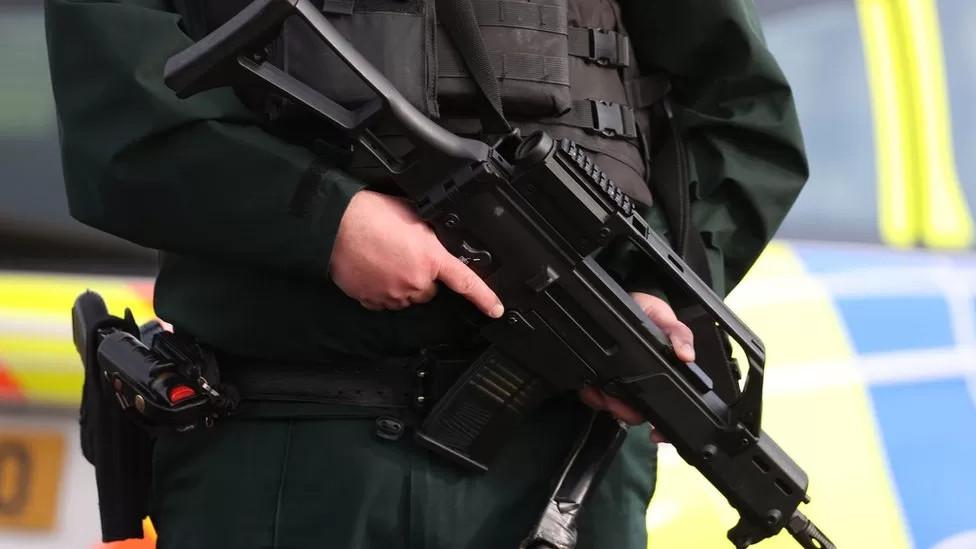
Terrorism threat level raised in Northern Ireland
The terrorism threat level in Northern Ireland has been raised.
The move, based on a Security Service (MI5) intelligence assessment, follows a rise in dissident republican activity, including a gun attack last month on a senior police officer.
It sees the threat level raised from substantial to severe, meaning the risk of attack or attacks has gone from “likely” to “very likely”.
It was announced by Northern Ireland Secretary Chris Heaton-Harris.
Tuesday’s announcement reverses last year’s downgrade which was the first change in Northern Ireland in 12 years.
How do terrorism threat levels work?
In February Det Ch Insp John Caldwell, 48, was shot multiple times by two gunmen while he was off-duty and coaching youth football.
He remains in a critical condition in hospital.
The attack was admitted by the main dissident group, the New IRA.
MI5 is believed to review the threat level every six months – the terrorism threat level remains substantial in the rest of the UK.
Threat levels are designed to give an indication of the likelihood of a terrorist attack and there are five rankings ranging from low to critical.
Severe is one level below critical.
In a written statement to MPs, Mr Heaton-Harris said: “MI5 has increased the threat to Northern Ireland from Northern Ireland related terrorism from ‘substantial’ (an attack is likely) to ‘severe’ (an attack is highly likely).
“The public should remain vigilant, but not be alarmed, and continue to report any concerns they have to the Police Service of Northern Ireland.”
Police Service of Northern Ireland (PSNI) Chief Constable Simon Byrne said: “This is part of an ongoing process of monitoring the threat level in Northern Ireland, which is conducted by MI5.
“We have spoken publicly about the number of attacks that have taken place in recent months, not least the attempted murder of DCI John Caldwell on February 22.
“We will relentlessly pursue those who seek to cause harm and terrorise our communities, and attack my officers and staff, and I pay tribute to them as they continue to deliver for our communities.
Three months prior to February’s attack on the police officer, the New IRA set off a roadside bomb in Strabane, County Tyrone, as a police car drove past, but neither of the two officers inside was injured.
Both attacks showed that after a number of years on the back foot, the organisation remains dangerous.
Two smaller dissident groups, the Continuity IRA and Arm na Poblachta (ANP), are also active.
Source » bbc





